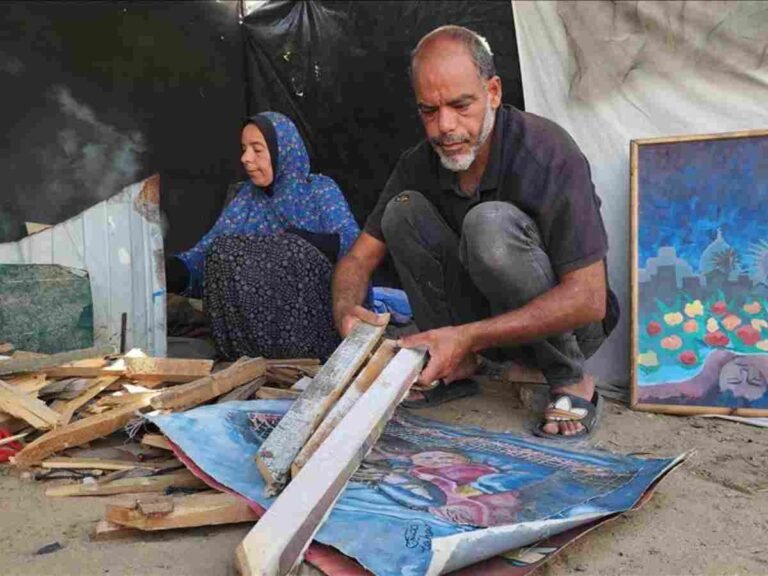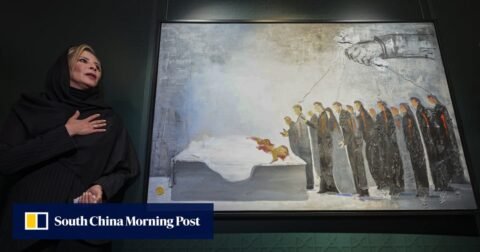Palestinian artist Taha Abu Ghali never imagined that the day would come when he would reach out to his paintings, which had accompanied him for two decades, break their wooden frames, and throw them into the fire. But hunger and siege in Gaza forced him to make this harsh decision: either burn his art or watch his children starve.
Burning your art to prolong your survival is the cruel choice that artist Abu Ghali was faced with, which war and famine forced him to break more than twenty paintings and use them as fuel for the fire after exhausting all other alternatives.
Paintings turned to ashes in Gaza
These paintings, which he had painted in bright colors more than 20 years ago, were suddenly turned into firewood to light a modest stove. He had no other choice, with cooking gas cut off for months, a scarcity of cooking alternatives in popular markets, and high prices for the little firewood available.
Many Palestinian artists have suffered the same fate, deprived by the blockade of the most basic necessities of life and forced to sacrifice the artworks that express their memories and lives, turning them into a means of feeding their families.
Since the war began, Abu Gali and his family have endured a harsh journey of displacement that has been repeated 11 times, moving from one tent to another, carrying his paintings as if they were part of his soul. He tried to protect them from bombing and displacement, distributing some of them to his relatives, but many were damaged or burned under the rubble.
These paintings were part of his life, painted during his university studies, but in the end he was forced to sacrifice them to feed his family.
From art teacher to homeless refugee
Abu Ghali worked as an art, crafts, and Arabic calligraphy teacher at Al-Nasr Private School in Gaza City until 7 October 2023. He holds a master’s degree in mental health and used to paint alongside his work to express life and humanity. But the war turned his life upside down. He lost his home in the Al-Nasr neighborhood of Gaza City and now lives with his family in a small tent.
In an interview with Anadolu Agency, Abu Ghali said:
We are required to paint people’s lives, but I no longer see anything but death and destruction around me. Despite this, I still hold on to the hope that things will calm down so that we can return to painting,” he adds as he rearranges the remains of unframed paintings: “Art will return one day, even if part of it has been burned.
Abu Gali’s story is just one aspect of the humanitarian tragedy in Gaza, where more than two million Palestinians have been forcibly displaced for over 22 months amid an unprecedented humanitarian crisis. Systematic starvation and the lack of clean water and healthcare have turned tents and shelters into breeding grounds for disease, while people face impossible choices for survival.
As Israel continues to block fuel and cooking gas and close border crossings, Gazans are resorting to harsh alternatives: burning wood, furniture, cardboard, old clothes, and even books and scientific research in a desperate attempt to stave off hunger.
Art burns in Gaza, but memories remain
By the small stove near his tent, Abu Gali stands with his wife, cooking food for their children using the remains of paintings created in a time of hope. The scene encapsulates the magnitude of human loss in Gaza, where beauty is reduced to ashes and artists become refugees searching for a means of survival.
Featured image supplied





